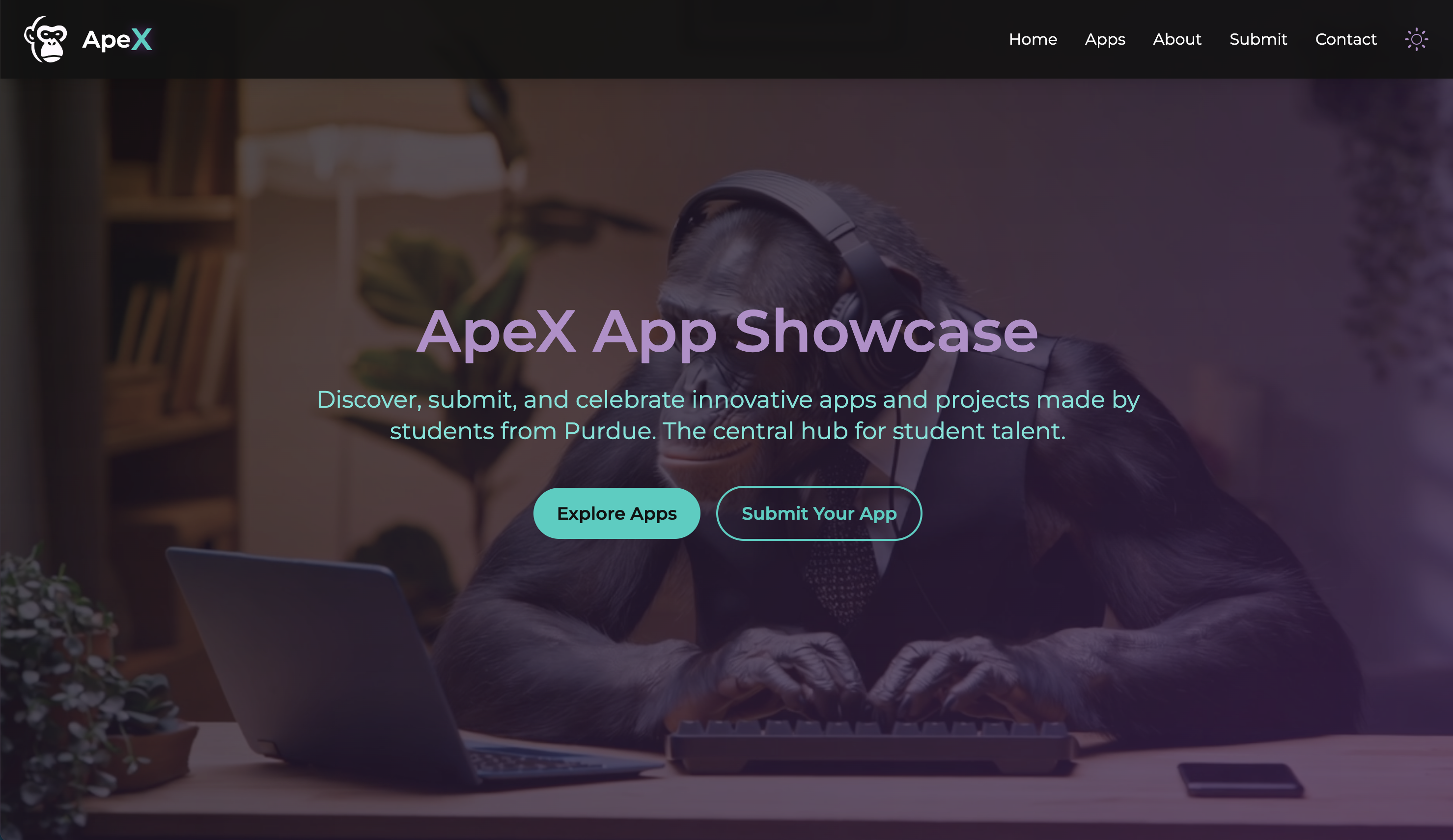
ApeX is the project where I learned the most about what I wanted to do and what was possible in the world. This is the thing that really opened my mind and showed me that if I wanted to do something, I could simply learn it myself and do it, no matter how complicated it was.
It started out as a little side project. I was playing around with Google AI Studio, and they had just released their 1 million-token context window. I was pushing the limits, testing different models, and I was really impressed. Around that time, I started thinking about websites. Up to that point, most of my experience with websites came from editing templates I found online. I knew people coded them from scratch, but I didn’t know what that actually looked like or how to go about doing it. None of my classes had taught me front-end web development.
So I started asking Gemini questions about how everything worked. And eventually, I thought, “Why don’t I just try building one myself?” So I did. I started with the basics, light mode, dark mode, HTML (which made things a little blocky at first), but I kept pushing. I was adding pages, learning how things connect, exploring JavaScript, and seeing how much you could actually do with just the front end of a page.
Then I had a realization: I wanted to see what other students at Purdue were working on. But when I searched around, I found virtually nothing. And that didn’t sit right with me. Purdue is a huge engineering and CS school, we have over 40,000 students. There's no way people aren’t building things. So I decided to turn my toy website into something useful: a place where students could share their side projects and research.
But that created a whole new challenge. I now needed a way to store submissions, let users upload projects, and figure out how to moderate what gets shown. And that doesn’t even touch on things like design or marketing.
This is when I dove deep and really started learning about programming architecture. I needed a back end. I needed a database. I had no idea where to even start. There’s no class that teaches you this stuff in the business school. How do I send data to a database? How do I secure user emails? How do I make sure my database isn’t just publicly accessible?
So I started asking questions, reading docs, watching tutorials, anything I could get my hands on. I slowly started building out a more advanced version of the site. I was constantly testing and refining. I wanted every page to be polished and consistent. I’ve spent over 100 hours on this project, easily. And while a seasoned professional could probably build this in a fraction of the time, those 100 hours were not wasted.
Looking back, I’ve learned so much.
I understand what’s happening behind the scenes on a web page now. I know why buttons move the way they do. I know the limits of what you can build in the browser and when you need to offload to the back end.
The biggest takeaway for me, though, was learning about programming architecture, how everything connects. Databases, edge functions, servers, caching, security, backend interaction. I used Supabase, and it was fascinating to see how SQL-based databases talk to the front end.
Then I added a website builder tool, where users could upload a paper or project, and I’d generate a full website from that using the Gemini API. That introduced a whole new world of problems, security, hosting, rate limits. How do I prevent people from abusing the API key? How do I make sure bots don’t drain usage? So I added things like bot detection, verification steps, rate limiting.
None of this stuff was even on my radar before ApeX. But now, when I think about new projects, I don’t just think: how can I build this? I think: how should the components interact? What does the back end need to support this? What are the security implications? How can I make this scalable from day one?
That mindset shift has been huge for me. I don’t need to know how to do everything, but I’ve gotten really good at knowing what questions to ask. And that’s probably the most valuable skill I’ve learned in college and in life: how to figure out what you don’t know. Because that’s the real blocker, not knowing what you don’t know.
Now when I get an idea, I don’t feel stuck. I just start asking better questions, and that unlocks the path forward.
ApeX taught me that.
It’s also taught me to think more critically about what makes a project successful. For ApeX, I didn’t push a real go-to-market strategy. I dropped a post on LinkedIn, didn’t promote it too hard, mainly because it started as a side project and was more of a learning tool than a business. It was always meant to be kind of a nonprofit-ish way to help students share cool work.
But now, I’ve got other ideas that I do think have real potential. And thanks to everything I learned from ApeX, I know how to structure those projects better from day one. I can move faster. I can think deeper. I can execute better.
More than anything, this project showed me I can build stuff. I can hold my own. I can ask the right questions. I can learn what I need, even if I start from zero.
And now that I’ve seen that, it’s hard to imagine going back.